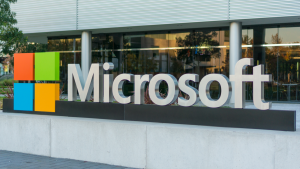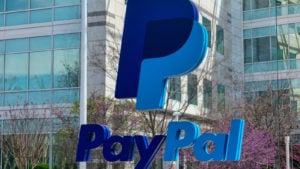With many stocks discounted after a rough outing in 2022, market participants may want to concentrate on compelling blue-chip stocks to buy. The reason? Established players typically enjoy a long track record of success. Ahead of an ambiguous ecosystem (at best), large capitalization firms provide a measure of confidence.
In addition, it’s much easier to conduct objective analyses on blue-chip stocks to buy. All because these companies tend to not only have revenue and earnings track records but also predictable ones, any quantitative calculations are likelier to make more sense than say assessing penny stocks. Though nothing in the market offers guarantees, companies with reliable data may command a premium.
And at the end of the day, you’re dealing with well-known respected enterprises. That’s going to carry some clout heading into a variable environment. So, if you’re ready, let’s dive into the must-have blue-chip stocks to buy in Jan.
| CVX | Chevron | $176.56 |
| D | Dominion | $61.87 |
| LMT | Lockheed Martin | $473.24 |
| MSFT | Microsoft | $224.93 |
| BHP | BHP Group | $66.04 |
| ROST | Ross Stores | $121.57 |
| PYPL | PayPal | $76.48 |
Chevron (CVX)

I’m leading off this list of blue-chip stocks to buy with hydrocarbon energy giant Chevron (NYSE:CVX). Notably, the company covers all segments of the oil and natural gas value chain: upstream (exploration and production), midstream (storage and transportation), and downstream (refining and marketing).
To be fair, I get the counterargument that the world pivots toward renewable energy and broadly, the electrification of mobility. Nevertheless, such paradigm-altering initiatives will take many, many years to implement. In the meantime, hydrocarbon energy sources – whether you like it or not – offer higher-than-average capacity factors. Presently, Wall Street analysts peg CVX as a moderate buy. This breaks down individually into six buys, six holds, and two sells. Also, TipRanks reports that hedge fund sentiment toward Chevron pings is “very positive.” Combined with solid profitability and strengths in the balance sheet, CVX ranks among the blue-chip stocks to buy.
Dominion (D)

Logically, power and energy company Dominion Energy (NYSE:D) practically sells itself on a fundamental basis. Under a bull market scenario, Dominion offers a relatively safe fallback plan because of its dividend. With a forward yield of 4.35% – which beats out the underlying sector average of 3.75% – the utility provides a platform of confidence. However, in a bear market – such as what we’re arguably in now – D stock still offers much relevance. Basically, demand for the underlying enterprise’s services will largely remain inelastic, recession or no recession.
To be fair, Wall Street doesn’t see it that way for the time being. In the trailing year, Dominion shares slipped over 26% in equity value. Still, this could be a worthwhile discount. Keep in mind that the company’s gross margin stands at a sector-busting 46.5%. This stat indicates Dominion features greater flexibility in terms of pricing. Finally, since the fourth quarter of 2020, Dominion delivered decent earnings performances. Thus, it makes for an interesting idea among blue-chip stocks to buy.
Lockheed Martin (LMT)

While Lockheed Martin (NYSE:LMT) natively carries a controversial profile because of its core defense-sector product line, if 2022 taught us anything, it’s that freedom isn’t free. Yeah, it might sound like a corny sentiment. However, because we Americans tend to feel that way, this demonstrates how fortunate we truly are.
In other words, most of us were born as free men and women – and we expect to live and die as such. But we’re in the minority. If you compare the struggles that the rest of the world faced, you can see why so many are willing to lay down their lives for the sake of liberty.
To be clear, analysts don’t exactly love LMT. And hedge funds have been reducing their exposure. Objectively, though, LMT pings as undervalued. Currently, the market prices shares at 21.9 times trailing earnings. In contrast, the sector median pings at nearly 30 times. However, it’s the overwhelming wave of geopolitical flashpoints that should have investors concerned. If even on a cynical level, LMT ranks among the blue-chip stocks to buy.
Microsoft (MSFT)

If the subject is (insert favorite topic) to buy, chances are, I’m going to select technology juggernaut Microsoft (NASDAQ:MSFT). So, of course, with the theme of the day being blue-chip stocks to buy, I’m obligated to mention MSFT. From relevancies in software applications to hardware (both professional and gaming) to cloud computing, Microsoft really does it all.
Fundamentally, I appreciate the likely stability that MSFT will facilitate. Sure, at the moment, MSFT does rank a bit on the overvalued side against earnings (though not by much). However, look at the profitability side. Its net margin of 34.4% ranks better than 97% of the competition. Also, its return on equity of almost 43% exceeds 95% of the industry, thus reflecting an extremely high-quality business.
Better yet, analysts love, love, love MSFT. Out of 28 individual ratings, only three rate it a hold with no sells. Further, the average price target stands at a lofty $288.69. Against the price at the time of writing, this forecast represents nearly 30% upside potential. And yes, hedge funds also love MSFT, with these institutional investors building up their position since Q1 2022. What else can you ask for regarding blue-chip stocks to buy?
BHP (BHP)

If you believe in the electrification of mobility, you should consider metals and mining stalwart BHP (NYSE:BHP) as one of the blue-chip stocks to buy. And if you don’t believe this, guess what? You should still target BHP on your portfolio wish list. As I’ve probably said a bunch of times before, with BHP, you’re selling tickets to the big game.
But if you load up the boat on an electric vehicle brand, do you know what you’re doing? Effectively, you’re wagering on which team will win said game. BHP produces several critical commodities, including copper and nickel. Both represent key components of EVs and/or EV batteries. Even combustion cars use plenty of copper so you fundamentally can’t go wrong with BHP. If you need some more convincing, BHP rates as objectively undervalued. Presently, the market prices shares at 5.2 times trailing earnings. In contrast, the sector median value is 11.9 times. On a final note, analysts peg the company as a consensus moderate buy. Thus, it’s worth looking into blue-chip stocks to buy.
Ross Stores (ROST)

For the final two ideas for blue-chip stocks to buy, I’m going to dive into the speculative side of the spectrum. First, let’s start with off-price retailer Ross Stores (NASDAQ:ROST), the least risky of the final two names. In the trailing year, ROST gained over 8%. Further, in the past five sessions, ROST returned stakeholders nearly 3% of market value.
Now, in the past five days for the benchmark equities index, it lost 0.6%. Combined with worrisome developments in the consumer economy – particularly poor consumer sentiment and record-breaking credit-card debt – ROST presents questions. Frankly, these questions revolve around the viability of continued customer spending.
However, we should also note that if workplace normalization trends materialize (as in, returning to the office), people will likely need to upgrade their wardrobes. And it seems like Wall Street realizes this narrative. Presently, analysts peg ROST as a consensus strong buy. Also, TipRanks reports that hedge fund sentiment for Ross Stores rates as positive.
PayPal (PYPL)

Admittedly, with PayPal (NASDAQ:PYPL), we’re in the absolute riskiest name on this list of blue-chip stocks to buy. I say that because of its market performance. In the trailing year, shares cratered badly, giving up more than 60% of equity value. However, recent sessions point to budding optimism for the embattled digital payments processing and business applications firm.
During the trailing five days, PYPL skyrocketed 11.5%. Again, look back to the benchmark equities index, which very roughly lost 1% of value. You might say that something’s going on. In my opinion, that something is the gig economy.
According to Industry Research, experts project that the gig economy will expand at a compound annual growth rate of 16.18% from 2022 to 2027, culminating in a sector valuation of $873 billion. Plus, with many willing to quit their jobs if forced back to the office, the gig economy could turn out to be bigger than initially projected. Here again, the market seems to recognize PayPal’s potential. Currently, analysts peg PYPL as a consensus strong buy. Also, hedge fund sentiment is very positive.
On the date of publication, Josh Enomoto did not have (either directly or indirectly) any positions in the securities mentioned in this article. The opinions expressed in this article are those of the writer, subject to the InvestorPlace.com Publishing Guidelines.
